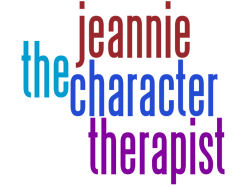|
This
month marks a departure from my Character Stereotypes series. I hear
the moans of disappointment. But it’s been a year, and it’s time to
move on to other things.
The first thing up for analysis
is Dwight Swain’s motivation reaction unit (MRU). I’d like to present
the psychology of it and why it works so well.
If you don’t already know, two
elements comprise an MRU:
1) Motivating Stimulus—occurs
outside your character
2) Character Reaction—occurs within your character
The stimulus has to come before
the reaction. A person can’t react to something that hasn’t happened
yet. If your character screamed before opening the
door, it would cause a lapse in logic. How did she know to scream
before opening the door and seeing the villain? It’s a classic MRU
problem—getting the stimulus and reaction out of order.
According to Swain, there are
four elements of the Character Reaction, all of which have to stay in
order as well:
1) Visceral Reaction—an
automatic gut reaction your character has no control over
2) Thought—what your character thinks
3) Action—what your character does
4) Speech—what your character says
If you get the order wrong, the
reader will scratch their heads in confusion. When you are slapped, the
nerves in your cheek tingle (visceral), you “see” red (thoughts of
anger), lunge toward your attacker (action), and yell (speech). When
writing, you may choose to leave out an element of the Character
Reaction, but the elements you do include have to be in order or the
reader will know something is off.
The element that Swain did not
include in the Character Reaction is emotion, perhaps because it should
be a given. But in case you were wondering where it fits in, emotion
essentially holds the MRU together.
Emotion comes before the
visceral reaction. Let’s look at an example.
If
I’m walking to my car in the parking lot and a shadow rushes toward me
from the side, I will feel fear within a nanosecond. My visceral
reaction might be nausea, my stomach knotting up, or blood rushing in
my ears. Maybe a few tenths of a second after that, I experience an
instinctive reaction, such as clawing for my mace spray or grabbing car
keys to strike out with.
|
But
this reaction is reflexive,
not something I contemplated doing. Like a child putting a bleeding
finger (due to a cut) into his mouth to suck, it’s inherent and inborn.
You’ve probably heard this before, but the natural reflexes in times of
danger are fight, flight, or freeze.
The truth is in situations like
this the rational brain reacts so far behind the immediate emotion that
the brain hasn’t really attempted a thought or tried to formulate words
yet. In the example above, I wouldn’t fully understand what is
happening to me until sometime later. I certainly wouldn't have
reasoned out whether the shadow is a man intent on robbing me or an
overzealous Brownie trying to sell me cookies.
Even more interesting is that
when I actually do have the rational thought that the shadow is just a
Brownie selling Girl Scout cookies, that won’t stop my emotions and
physiological reactions already under way (the cold sweat, labored
breathing, rapid heart rate). This is because the emotional brain is
not only faster but more powerful than the rational brain, especially
when threatened. The emotional brain takes over and simplifies
everything to black-and-white choices instead of subtle shades of
rational gray.
Neuroscientist Matthew Lieberman
found that when the amygdala (emotional brain) is active with blood and
oxygen, there is less activation in the prefrontal cortex (rational
brain). Our thinking power is disrupted and there are deficits in our
problem solving because the blood and oxygen are present in the
amygdala versus the prefrontal cortex. It is like temporarily losing
ten to fifteen IQ points, which explains why the visceral reaction
leads to inborn reflexes to protect us.
Hopefully you see how tightly
interwoven the emotional brain is in the entire Character Reaction
sequence of the MRU. Swain instinctively knew this, and psychology and
neuroscience back him up.


|